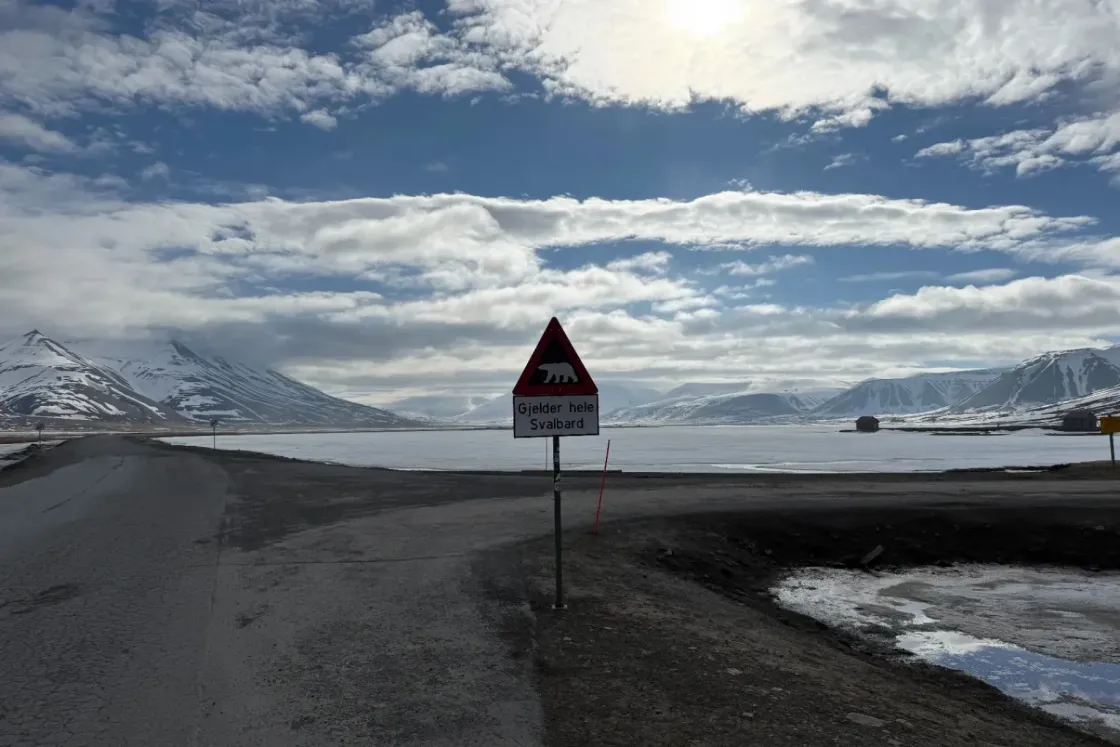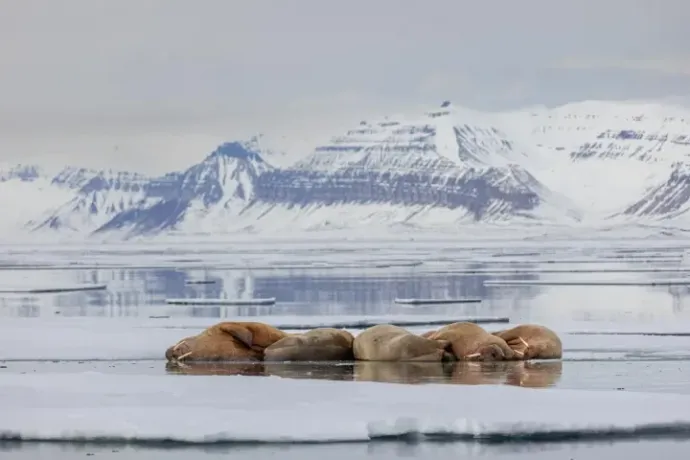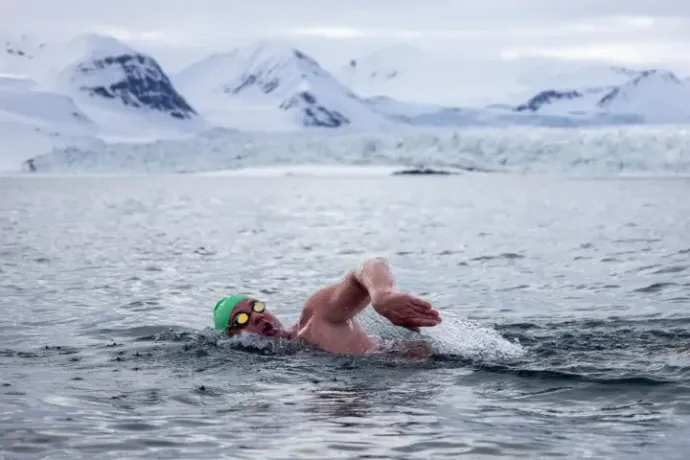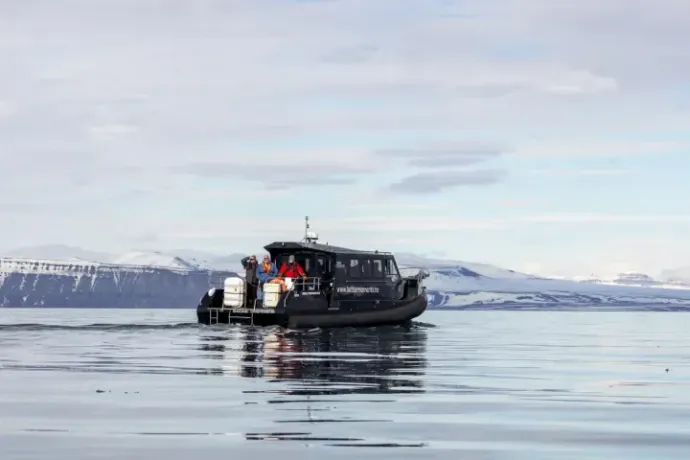First Hungarian athlete completes ice kilometre swim beyond both polar circles

Last November, Bulcsú Lengyel became the first Hungarian to swim one kilometer in the icy waters of Antarctica, and a few weeks ago, he successfully completed a one-kilometer ice swim in the Svalbard archipelago, becoming the 16th person in the world to complete this feat beyond both the Arctic and Antarctic circles.
For the swim in Antarctica, the Hungarian ice swimmer had to go through several rounds of selection, but this time there was no need for the process, as his performance in Antarctica automatically qualified him for a swim beyond the Arctic Circle, an event which was organized by the British Ice Swimming Association.
Compared to Antarctica, the Svalbard archipelago, also known as the Spitzbergen, is easy to reach, with flights operating several times a week between Oslo and the group of islands under Norwegian sovereignty. Bulcsú Lengyel boarded one such flight with his fellow swimmers, companions, helpers, and family members. In addition to British swimmers, this time the team included a Kazakh, a New Zealander, and a Hungarian.
The eleven swimmers who set out to cover the one-kilometer stretch were divided into two groups. There were two reasons for this: first of all, the boat which transferred them to the location of the swim could only carry ten people, and secondly, this made it easier to guarantee the safety of each swimmer.
The location chosen for the swim was in the North Bay, at 78 degrees latitude, a two-hour boat ride from Longyearbyen, the capital of Svalbard. As Bulcsú Lengyel said, this location was 1,400 kilometers closer to the North Pole than the location of his Antarctic swim was to the South Pole.
Bulcsú Lengyel was assigned to the second group. They set out in the afternoon, and before they entered the water, the captain of their boat spent an hour scanning the water for polar bears. Anyone visiting the Svalbard Islands must always be prepared to encounter polar bears, and even leaving one's accommodation is only safe with a weapon or under armed escort.


When Lengyel swam in Antarctica, they had to swim 125 meters back and forth between two buoys, but here they had to swim the length of a kilometer. This had several disadvantages. One was that the currents made the actual distance covered considerably longer, which is evident from the finishing times, and the other was the temperature of the water. The swim started in open water and ended near a glacier. This is likely why the temperature measured at the start was 2.63 degrees Celsius, while at the end it was minus 1.5 degrees Celsius," Lengyel said, adding that according to the rules, of the temperatures recorded by the three thermometers used at the start, only the highest one among the temperatures recorded by the three thermometers used at the start must be recorded in the official results.
Only one person was allowed in the water at a time, and they were accompanied by a motorboat throughout their swim. In addition to the ER doctor, there was also an armed guard in the boat to watch out for any polar bears that might show up. The doctor kept an eye on every movement of the swimmers to make sure their stroke rate didn't drop dramatically, that they were able to pedal with their legs, and that they were able to stick to the planned pace. Any change in these could be a sign of hypothermia, i.e., the body becoming too cold and the swimmer losing consciousness, in which case the swim must be stopped immediately. Labored breathing could indicate a pulmonary edema, which also constitutes an emergency.

"Due to the currents experienced during the swim, I spent three minutes longer in the water than planned, but because the water was warmer than expected and the sun was shining brightly, this did not cause any extra difficulties. After the swim, due to the small size of our transport boat, we had nothing but our clothes to help us warm up. This was not the first time I had to recover under such conditions, and I was able to restore my normal body temperature much faster than expected," said Lengyel.
Ice swimmers are often in greater danger after their swim than while in the cold water. This happens because when they get out of the water, the cooled blood in their limbs flows back to their heart, thereby cooling their core body temperature. This can cause extreme shivering and last up to 15-20 minutes, and the actual warming process only begins after that, ideally with a lukewarm shower and a sauna.
For more quick, accurate and impartial news from and about Hungary, subscribe to the Telex English newsletter!